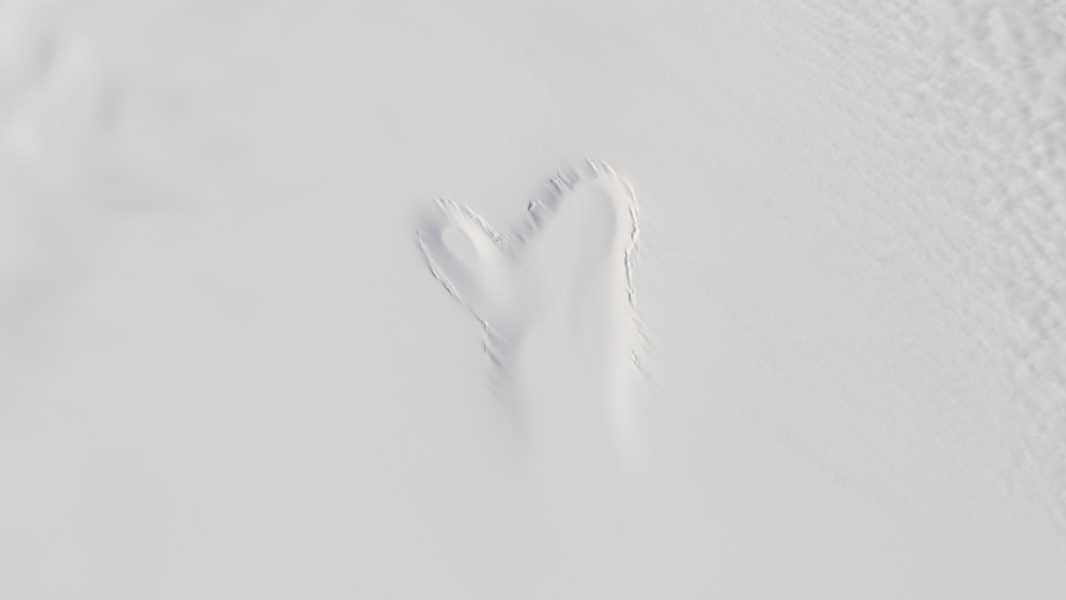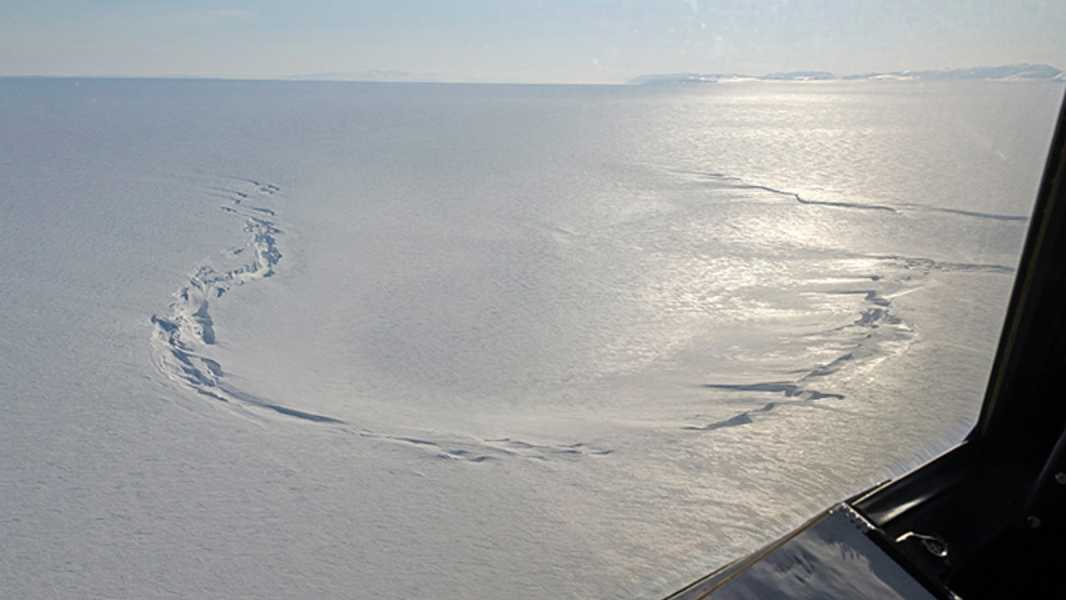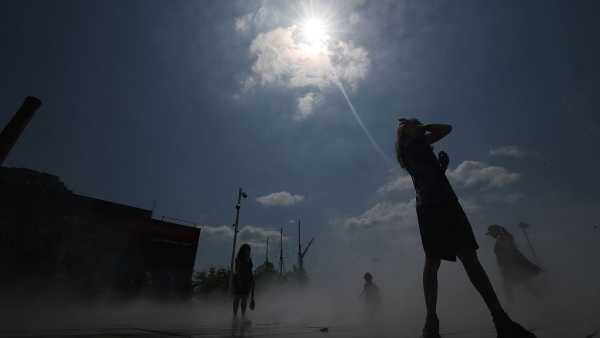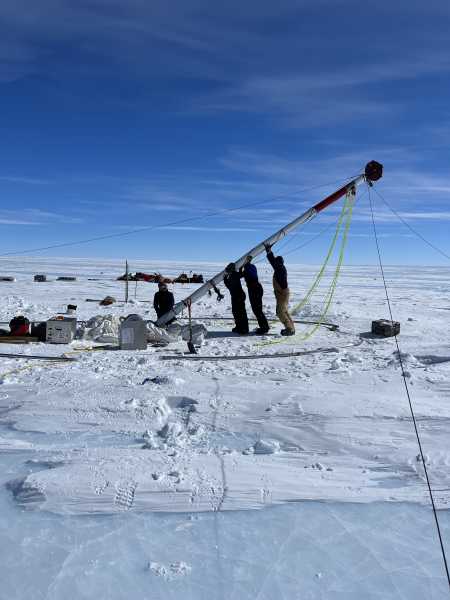
The ghostly shape, which scientists have dubbed the “mitten,” appeared between August 16 and September 6, 2011. It is approximately 2 miles tall. (Image credit: NASA Earth Observatory/Landsat)
Scientists were stunned when a large, ghostly shape was spotted on satellite images of Greenland 13 years ago. The icy spectacle was caused by a depression in the snowy surface caused by the collapse of an underground lake directly beneath the figure.
A teardrop-shaped ghost, resembling a misshapen figure waving into space, was discovered in the Flade Isblink ice cap, a roughly 3,300-square-mile (8,550-square-kilometer) ice cap located at the northernmost tip of Greenland, deep within the Arctic Circle. The ice hole was about 2 miles (3 kilometers) long and just over 1 mile (2 km) wide, with a depth of 230 feet (70 meters) when it appeared, according to NASA's Earth Observatory.
The strange structure, which researchers also call the “mitten” because of its glove-like shape, formed between August 16 and September 6, 2011, when the area was hidden by clouds in satellite images.
In a 2015 paper, scientists showed that the depression formed when a subglacial lake rapidly drained its water supply, leaving behind an underground cavern that quickly collapsed. During the peak of this draining process, scientists estimated that the lake was leaking 7,600 cubic feet (215 cubic meters) of water every second.
The event was “possibly the first documented case of rapid drainage of a subglacial lake in Greenland,” Kelly Brunt, a glaciologist at NASA's Cryospheric Sciences Laboratory who was not involved in the study, told NASA's Earth Observatory in 2015. Most of the country's similar underwater lakes are considered fairly stable, she added.

This aerial photograph taken on April 26, 2013, shows the mitten in close-up.
Researchers continued to monitor the basin, and a follow-up study in 2022 found that the subglacial lake had been slowly filling since 2012. By 2021, the basin floor had risen 180 feet (55 m) — up to 50 feet (15 m) below the surrounding ice — despite a second, smaller drain in 2019.
Scientists initially assumed that most of the water returning to the lake came from meltwater that flowed underground. However, calculations later showed that the meltwater could have been
Sourse: www.livescience.com





